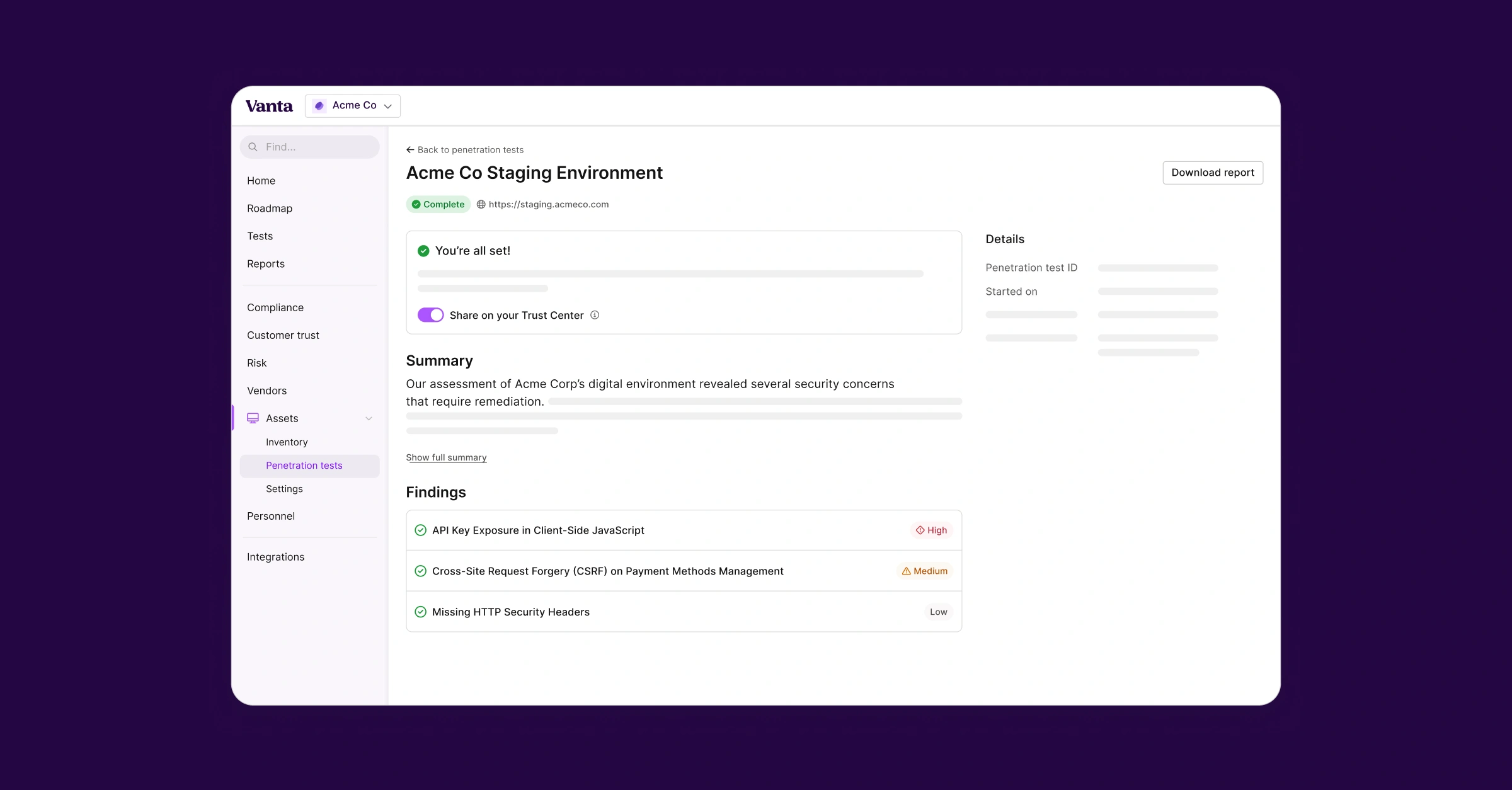Share this article

New in Vanta | February 2023
Accelerating security solutions for small businesses Tagore offers strategic services to small businesses. | A partnership that can scale Tagore prioritized finding a managed compliance partner with an established product, dedicated support team, and rapid release rate. | Standing out from competitors Tagore's partnership with Vanta enhances its strategic focus and deepens client value, creating differentiation in a competitive market. |
February’s product update includes many exciting announcements from Vanta. We announced Custom Frameworks and Controls and other improvements to the Vanta experience:
- Vanta Questionnaire Automation
- Six new access-only integrations
- Improvements to Risk Management
- Localized employee notifications
- New automated tests for Cloudflare and GitHub
- Custom notes for tests
- Enhanced search, sort, and filter through Inventory
Introducing Custom Frameworks and Controls

As your organization grows in size and complexity, so do your security and compliance needs.
Custom Frameworks and Controls allow you to tailor-make frameworks and controls according to the needs of your growing business. Use internal expertise to build a framework that Vanta doesn’t support or create custom controls - offering you the flexibility to create and operate a personalized security program in a single solution.
Read more about Custom Frameworks and Controls
Vanta Questionnaire Automation

Since acquiring Trustpage, we’ve worked hard to integrate our products and are excited to announce Vanta Questionnaire Automation - the fastest and most accurate way to automate security questionnaire responses.
Vanta Questionnaire Automation automatically syncs Vanta policies and documents to create an answers database for a seamless questionnaire experience.
Learn more about Vanta Questionnaire Automation
Six new integrations: Notion, Segment, PagerDuty, and more!

We’ve added six more integrations to our ever-growing list of access integrations: PagerDuty, Netlify, Dropbox, Notion, Calendly, and Segment.
Customers that use Vanta’s Access Reviews product can now integrate even more of their tech stack to automatically and continuously monitor access and automate the offboarding process in even more vendors - without logging into each admin portal.
View the full list of available integrations
Improvements to Risk Management

Vanta’s Risk Management product has two new updates that allow admins to customize what people can see.
Admins can now mark risks as sensitive, ensuring that confidential risks are still stored in your risk register, while hiding them from the view of auditors, non-owners, or non-admins.
Auditor sharing settings allows customers to choose which risk snapshots are shared with auditors, allowing customers to create draft risks for internal feedback and reporting, and to choose to share them with auditors when ready.
Visit the Risk Management page
Localized employee notifications

Vanta can now send user notifications in four languages: English, French, German, and Spanish.
Admins can select a language for company-wide user notifications, while individual users can choose one for their personal notifications. Currently, these only apply to employee Slack and email notifications.
Visit the Settings page to set up company and user languages
New automated tests for Cloudflare and GitHub

Vanta is introducing seven new tests for our Cloudflare integration and three new tests for our GitHub integration.
For customers that use Cloudflare and GitHub, more tests mean better alignment for your audit. These new tests fetch for more pieces of data, including detecting repository privacy settings, pending organization invitation age, Cloudflare notifications settings, and more.
Custom notes for tests

Vanta users who are working through tests can now annotate information in those tests.
Custom notes can be used to note things down about a test to a user themself or to their collaborators. Every user who has access to the test details page will be able to see custom notes about each test, ensuring for effective collaboration between users, admins, test reviewers, and remediators.
Learn more about adding custom notes to tests
Enhanced search, sort, and filter through Inventory

We’ve added more capabilities to searching, sorting, and filtering through items in the Inventory page.
Users will now have many more capabilities in the Inventory page, including the ability to filter for values in user data, sort by the description column, search by serial number for computers, and more. This added functionality allows for a more intuitive page navigation experience and better overview of Inventory items.
Visit the Inventory page in Vanta
See our Release Notes for all updates this month.
Try it out
Log in to your Vanta account to try out these new features. For prospective customers, request a demo.
As always, we welcome your feedback. Let us know what you think by reaching out to your Customer Success Manager. And stay in the loop on Vanta news via LinkedIn.





FEATURED VANTA RESOURCE
The ultimate guide to scaling your compliance program
Learn how to scale, manage, and optimize alongside your business goals.
















.png)

.png)





.svg)
.svg)
.png)
.png)
.png)